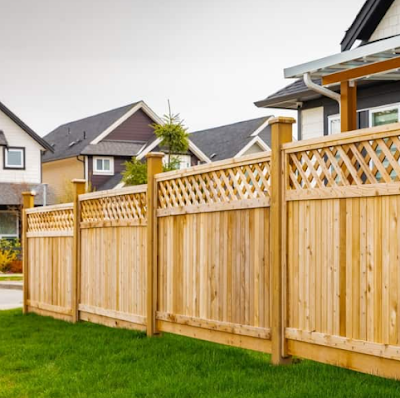How to Build a Fence: A Beginner's Guide
Step 1: Planning and Preparation
The first step in building a fence is to plan and prepare the area where the fence will go. This includes measuring the length of the fence, marking where the posts will go, and clearing any obstacles or debris from the area. You'll also want to consider any zoning or building codes in your area that may affect the height or placement of your fence.
Step 1.1: Choosing Your Fence Material
Before you start building your fence, you'll need to choose the right material for your needs. Some common options include:
- Wood
- Chain link
- Aluminum
- Vinyl
Pros and Cons of Wood Fences
Wood fences are a popular choice for their natural look and versatility. However, they do require more maintenance than other materials and may not be as durable in extreme weather conditions.
Step 2: Setting the Posts
Once you've planned and prepared the area, it's time to set the posts. This involves digging holes for the posts, adding gravel for drainage, and securing the posts in place with concrete. The spacing of the posts will depend on the length of the fence and the type of material used.
Step 2.1: Attaching the Rails
After the posts are set, you'll need to attach the rails that will hold the fence panels. This involves measuring and cutting the rails to size, then attaching them to the posts with brackets or screws.
Pros and Cons of Chain Link Fences
Chain link fences are a popular choice for their affordability and durability. However, they may not provide as much privacy as other materials and can be difficult to install on uneven terrain.
Step 3: Adding the Fence Panels
With the posts and rails in place, it's time to add the fence panels. This involves measuring and cutting the panels to size, then attaching them to the rails with nails or screws. You may also want to add finishing touches such as caps or trim to improve the look of the fence.
Step 3.1: Gate Installation
If your fence includes a gate, you'll need to install it separately. This involves attaching hinges to the gate and then attaching the hinges to the post. You may also want to add a latch or lock for added security.
Pros and Cons of Aluminum Fences
Aluminum fences are a popular choice for their low maintenance and durability. However, they may not provide as much privacy as other materials and can be more expensive than some options.
Step 4: Finishing Touches
Once the fence is installed, you may want to add some finishing touches such as staining or painting the wood or adding decorative elements such as plants or lighting.
Step 4.1: Maintenance
It's important to maintain your fence regularly to ensure its longevity. This includes cleaning the fence, inspecting it for damage, and repairing any necessary areas.
Pros and Cons of Vinyl Fences
Vinyl fences are a popular choice for their low maintenance and durability. However, they may not provide as much privacy as other materials and can be more expensive than some options.
FAQs
Q: How long does it take to build a fence?
A: The time it takes to build a fence depends on the size and complexity of the project. A simple fence can be built in a weekend, while a larger or more complex fence may take several weeks to complete.
Q: What tools do I need to build a fence?
A: Some common tools for building a fence include a post hole digger, saw, drill, level, and measuring tape.
Q: Can I build a fence on my own?
A: Yes, with the right tools and guidance, building a fence can be a DIY project. However, it's important to ensure the fence is properly installed and meets any zoning or building codes in your area.
Q: What is the best type of fence for privacy?
A: Wood and vinyl fences are popular choices for privacy due to their solid construction and height options.

